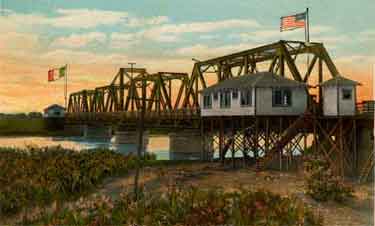“Social welfare functions” are a good example of the payoff to thinking abstractly. They are answers to a very large question, which might be put: How should human beings live together in society, and what should society’s goals be? If you want to focus on the government, you could frame the question as: What should the government’s objective be? How should it decide between alternative policies? Not every answer to this question lends itself to being summarized in a social welfare function, but many do, some rather precisely, some loosely.
Thus, the political philosophy of John Rawls might be summarized in the social welfare function V=min(U1, U2, U3, …, Un), where V is what society is trying to maximize, and U1, U2, … Un represent the utilities of individuals 1, 2, …, n, where n is the population. Similarly, the utilitarian political philosophy might be summarized in the social welfare function V = U1 + U2 + … + Un. From these social welfare functions, with a little bit of careful further thinking, one can make several deductions. First, both Rawlsians and utilitarians will tolerate some inequality, basically for the same reason: allowing some individuals to get ahead of others gives them the incentive to create wealth. A utilitarian values the self-enrichment of individuals per se. A Rawlsian doesn’t, but he will value it indirectly if the wealth creation spills over and benefits the poorest. Second, both Rawlsians and utilitarians almost certainly would support some redistribution. The Rawlsian does so because he only values the welfare of the poorest, and no matter how much he reduces the welfare of everyone else, if he can benefit the poorest at all, he will do so. The utilitarian will support some redistribution, even if, as is probably the case, it is inefficient and reduces the total wealth of society, because the marginal utility of a dollar is higher for the poorest individuals. But the Rawlsian will support more redistribution than the utilitarian. If we call the amount of redistribution T, there will be some T’>0 that maximizes total utility, and some T”>T’ that maximizes the welfare of the poorest. The utilitarian will prefer redistribution T’, the Rawlsian, T”.
There are more games you can play with social welfare functions (SWFs). You could call democratic any SWF that places equal value on all individuals’ utility, and aristocratic any SWF that places much greater weight on some individuals’ utility than others. (Both the Rawlsian and utilitarian SWFs are democratic, by this definition.) You could call an SWF relatively socialistic if it imputes to individuals highly risk-averse utility functions: that is, a socialistic society will tolerate fairly low average living standards, in exchange for an equitable distribution of income. By the same token, a relatively capitalistic SWF would impute to individuals utility function much closer to risk-neutrality, maximizing incentives for wealth creation while tolerating extreme destitution for some members of society. Now, I want to introduce the concept of a conservative social welfare function. While I thought it up myself, I’m not surprised that a Google Scholar search reveals it has been thought of before, and with the same motivation that made me think of it a few years ago: trade policy. The concept applies directly to immigration. But first, let me try to state it mathematically. Imagine a society which seeks to maximize:
(1) V(t+1) = f(U1(t+1) – U1(t)) + f(U2(t+1) – U2(t)) + … + f(Un(t+1) – Un(t))
That is, in choosing how to allocate resources at time t+1 it takes into account how resources were allocated at time t. Thus the conservative SWF is backward-looking. But of course, you don’t really know anything about the conservative SWF until you know something about f(). So here’s a bit of characterization of f():
(2) (a) f(0)=0, (b) f(x)>0 if x>0, (c) f(x)<0 if x<0, and most subtly, (d) f(x) + f(-x) <<0
Conditions 2(a) through 2(c) are rather obvious. Society likes it when people’s utility improves, dislikes it when people’s utility deteriorates, is indifferent when it stays the same. The really defining feature of a conservative SWF is condition 2(d), which implies that society is much more opposed to anyone seeing their utility fall, than it is in favor of seeing people’s utility rise. If a policy harms A while benefiting B by an equal amount, under a conservative SWF, the policy will be rejected. Even if a policy raises A’s utility by considerably more than it reduces B’s, the policy is likely to be rejected.
Now, if you believe that open borders would have an economic impact anything like what, say, John Kennan’s model predicts, then they should pass a Rawlsian or utilitarian test very easily. But open borders might still be rejected from the perspective of a conservative SWF, since in Kennan’s model it reduces wages of all non-migrant workers, while roughly doubling world GDP through huge gains to owners of capital and migrants. Whether this is the “real” reason (if that means anything) for migration restrictions, I don’t know. However, I do have a sort of hunch that conservative SWFs are an important part of the way democratic politics operate. Continue reading The conservative social welfare function

